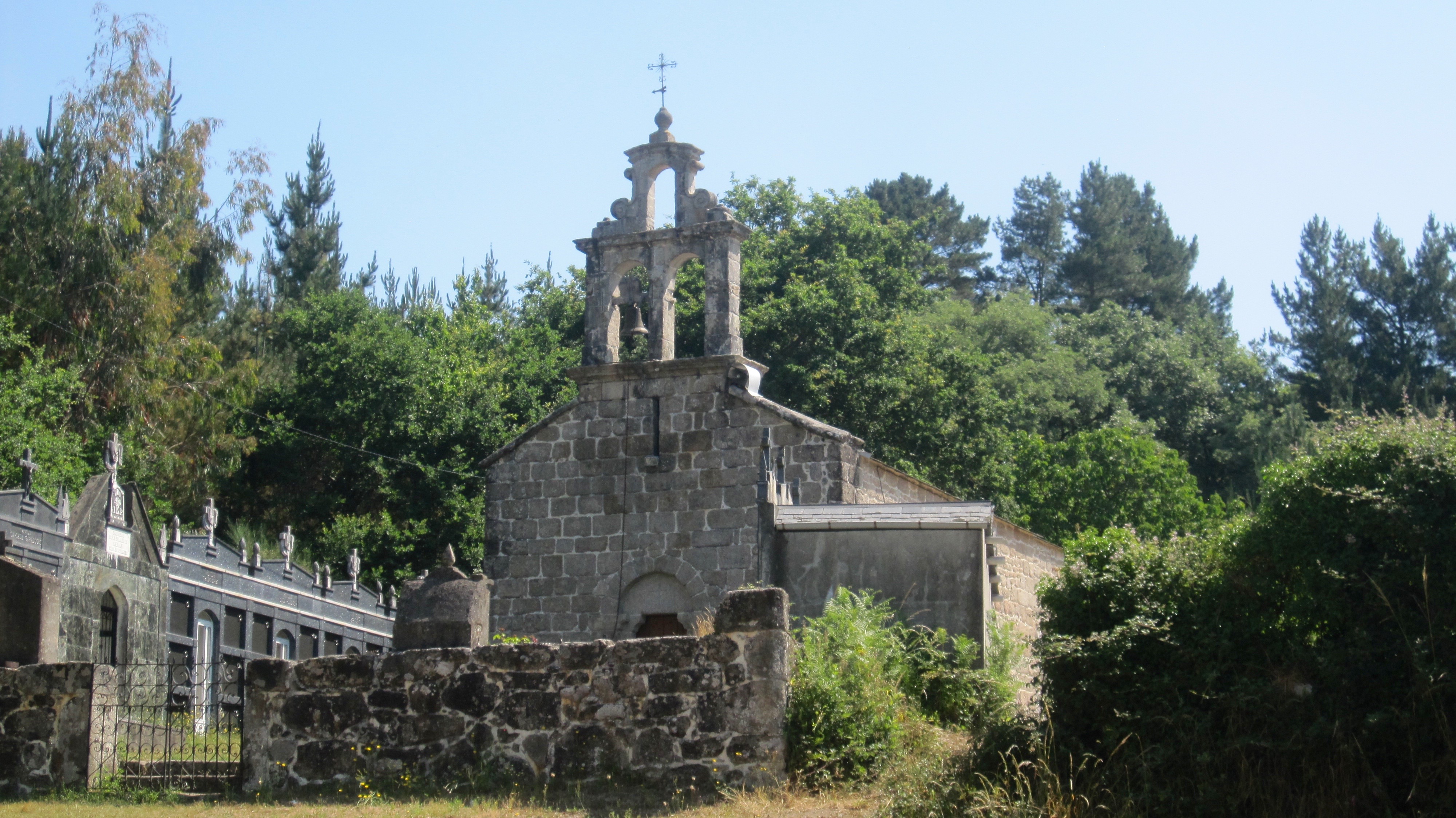The heavy mist which covered the town during the night quickly lifted up and the day became cloudless and clear again. Often, the path followed a tiny asphalt road, luckily with no traffic on it. The first rest I took was at the Capilla del Carmen, a little chapel in the middle of a gorgeous oak forest with many picnic tables underneath. I was the only person there.
Water fountain at the Capilla del Carmen
Soon I came to a pair of shoes on a trail marker. I knew the shoes – they belonged to the pilgrim Gabriel. The bottom of one shoe was almost totally worn off with a big hole in the sole. It was to me as if Gabriel himself was standing on the column and sending his greetings to the passing pelegrinos.
When I passed a barn, an old man started to talk with me. He invited me into his barn where he had exhibited hundreds of little very primitive carved figurines. He spoke some German. I was so touched by his effort to create something that I bought 2 little things. A third creation he gave to me as a present.
In the town of Vilabade, the beer company Estrella Galicia was using the Camino for a clever advertisement.
Souto de Torres, one of many Galician villages built out of granite.
Cemetery of Souto de Torres
A little detour brought me to the highlight of the day a forest with several hundreds of years old chestnut trees and a Preromanesque chapel with an interesting window formation.
Hundred of years old chestnut tree
Preromanesque chapel
A group of peregrinos
Another loving little dog wanting to be touched
In the evening, I arrived in Lugo, a remarkable town going back to Roman times. The Roman town was called Lucus Augusti and served as the capital of the province Gallaecia. The old town is still surrounded by a totally intact Roman city wall. This is due to the fact that already in the 16th century, the government was issuing a law that not a single brick was allowed to be removed from the wall. Today, it is dedicated as a World Heritage Site.
Roman City wall, (1.3 miles long, up to 39 ft. high and 21 ft. thick)
Main entrance gate (of 10 gates), Puerte de San Pedro
Cathedral Santa Maria, founded in 1129.
One of many plazas in Lugo















